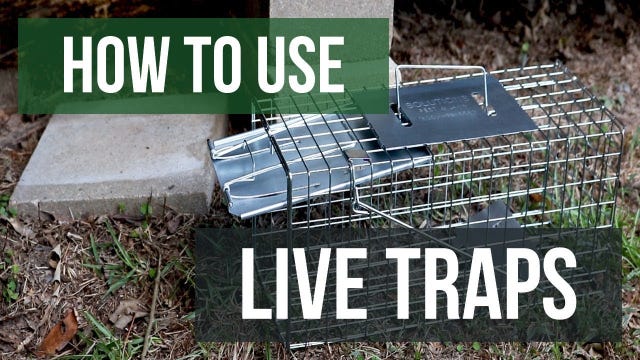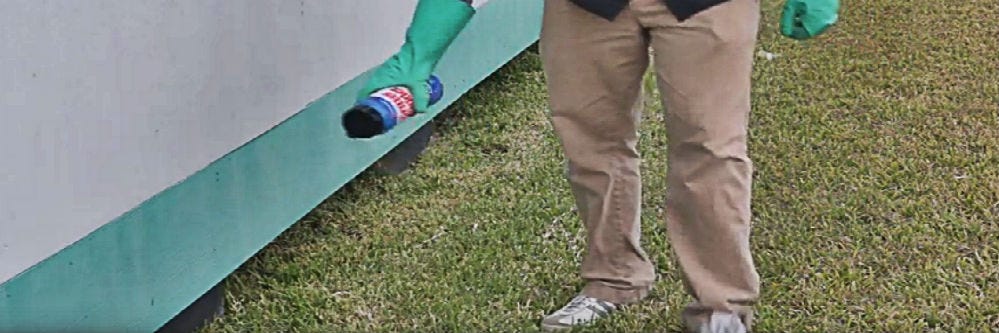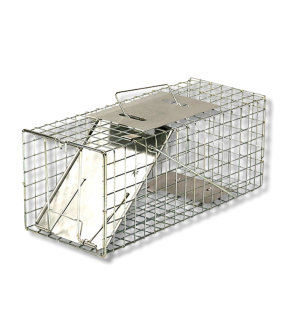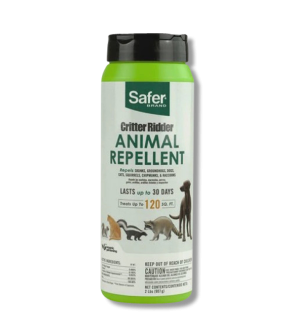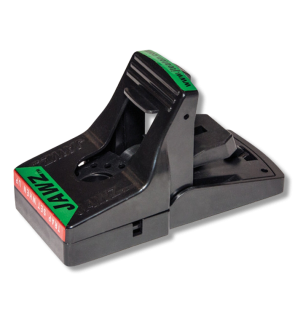Gain access to personalized product screening, the best pricing, rewards, and more!
Most Effective Products
Chipmunk Control: How To Get Rid of Chipmunks
This page is a general chipmunk control guide. Using the products and methods suggested, you will get control of chipmunks. Follow this guide and use the recommended products, and we guarantee 100% control over chipmunks. Before applying control, consult your local and state guidelines to see if chipmunks are a protected species in your location.
While chipmunks are portrayed in cartoons and TV as cute, fuzzy, and squeaky-voiced critters, they can be destructive nuisance pests. Like their relatives, the squirrel, chipmunks are known for digging burrows and causing structural damage to patios, pools, foundations, and retention walls.
Chipmunks reside in all 48 contiguous states of America. They thrive outside their natural habitat of the woods because homes and gardens provide ample food options.
Chipmunks can be a nightmare for gardeners because they dig flower bulbs, empty bird feeders of seed, and steal pet food. They also move quickly, and their populations can get out of control if left unchecked.
As irritating as these creatures can be, they can be eradicated from your property with the right approach and the proper control products, which we have in stock here at Solutions Pest and Lawn. Keep reading our chipmunk control guide below to learn how you can get rid of chipmunks quickly and affordably.
Identification

Chipmunks can often be confused for squirrels, so their identification is pivotal for control. Before applying the treatment, you must ensure you’re dealing with chipmunks, not another animal. Below, you can find some common characteristics of chipmunks.
- Depending on the species, chipmunks can range in size from 3 to 8 inches.
- They have four legs and typically weigh less than one pound.
- They have a fuzzy tail measuring anywhere between 3 to 4 inches in length.
- They have stripes on their body (even on their face) and tails that vary in color depending on the species.
- Chipmunks are most commonly found on the ground, unlike squirrels, which can be seen at high altitudes, like on trees or powerlines.
Use the image and description above to help you correctly identify chipmunks. If you are unsure, contact us, and one of our representatives will assist you with properly identifying your nuisance pest.
Inspection

Once you have confirmed that chipmunks are on your property, inspect your yard for chipmunk activity. This step is crucial because you need to know where they harbor to know where to apply treatment. During the inspection, you will search for these “hotspots” where chipmunks are found.
Where To Inspect
Chipmunks are commonly found in woody areas with many places to harbor. This means in areas that provide them with logs, rocks, and brush and protection from predators like hawks.
Inspect your yard, flower beds, gardens, trees, near tree stumps, under yard debris, under woodpiles, under logs, under rocks, and in small openings in your yard. Inside your home, search in cracks and crevices, attics, and basements.
What To Look For
You’re looking for a chipmunk activity. This includes looking for their burrows (small holes dug in your yard) inside your yard, near your property, or near bird feeders, especially if they have been tampered with, and searching for uprooted flowers or crops.
It would be best if you also looked for chipmunk damage. Chipmunks can cause structural damage to patios, pools, porches, foundations, and retention walls. They can also destroy gardens by eating flower bulbs, stealing food from bird feeders, and even pet food left outside. If they get inside a home or structure, they can cause extensive structural damage.
Treatment
Once you have confirmed chipmunk activity, it is time to begin treatment. Remember to read all product labels, follow the application instructions on them, and wear personal protective equipment (PPE) to stay safe.
We recommend the Solutions Humane Live Trap and Critter Ridder to get rid of chipmunks naturally. The Solutions Humane Live Trap allows you to safely trap and relocate chipmunks without harming them. Critter Ridder is a combination of organic and natural ingredients that will irritate chipmunks and trigger avoidance behaviors that will drive them away.
Step 1: Remove Food Sources & Potential Shelter

You want the chipmunk to enter the live trap with the help of bait. You also want to ensure they do not leave the basement, garage, attic, or yard and enter your home. Because of this, competing food sources need to be removed.
Be sure to clean your property thoroughly. Remove yard debris, like fallen branches or wood piles, since chipmunks may use these items for shelter. Keep your trash sealed in trash bags and stored outside in bins with a tight lid. Other food sources, such as pet food, should be stored inside.
Step 2: Set Up the Solutions Humane Live Trap

The Solutions Humane Live Trap is easy to use and is our top recommendation for a natural, humane option for removing chipmunks.
To use, release the trigger mechanism, open the door, and set the trap. Once the trap has been set, you’ll need to set bait inside. We recommend using a combination of peanut butter, fruits, cereal grains, or even flower bulbs for chipmunks.
Set the trap close to the “hot spots” you identified and close to their burrows. Set the traps during the day when they are most active. Be sure to place your trap on an even surface. A chipmunk might push or knock over the trap to reach the bait inside. Place a brick or weight on top of the trap to avoid this.
Once the chipmunk is caught, you can hand it over to animal control or release it back into the wild at least 5 miles from your property.
Step 2: Apply Critter Ridder Repellent
Critter Ridder is an additional treatment measure.
Simply sprinkle around the perimeter of your property, in flower beds, near trees and their burrows, and in areas where their activity has been most prevalent.
The 22-ounce bottle will treat 3,500 square feet. Make sure to apply it twice weekly for two weeks.
Prevention
After you have captured or warded off chipmunks from your property, you need to make sure they don't return. No treatment plan is finished until changes to the environment and mechanical means are enacted to completely control and prevent chipmunks from returning.
- Start by fixing or replacing broken fences where they enter the structure. Seal and close off any cracks, crevices, or openings in the foundation and walls of your structure.
- Remove clutter as much as possible from basements, garages, and other indoor storage spaces. Any potential food or water sources, especially pet food, should be properly sealed in a container and stored indoors.
- Use caulk, copper mesh, or pest control foam to seal and close off these openings. Pick up your property's yard debris, leaf litter, woodpiles, logs, rocks, and general clutter. Get rid of bird feeders or put them far away from your structure to prevent chipmunks from coming close to your property.
- And finally, reapply Critter Ridder periodically to keep chipmunks and many animals off your property.
Key Takeaways
What Are Chipmunks?
- Chipmunks are a destructive pest known for damaging gardens and yards via their feeding habits.
- Chipmunks are small creatures with a great sense of smell. When they infiltrate indoors, such as basements and garages, these tiny creatures can cause severe damage to your structure or wiring.
How To Get Rid of Chipmunks Indoors and Outdoors
- We recommend naturally controlling chipmunks by using our Solutions Humane Live Trap and applying critter-ridder repellent.
- Bait the live trap with sunflower seeds or peanut butter, placing them behind the trigger plate.
Preventing Chipmunk Reinfestation
- Remove potential food sources and trash and seal cracks and crevices with Stuf-Fit Copper Mesh and/or caulk to prevent chipmunks from entering your basement or property again.
- Apply Critter Ritter preventatively to keep chipmunks off your property.






